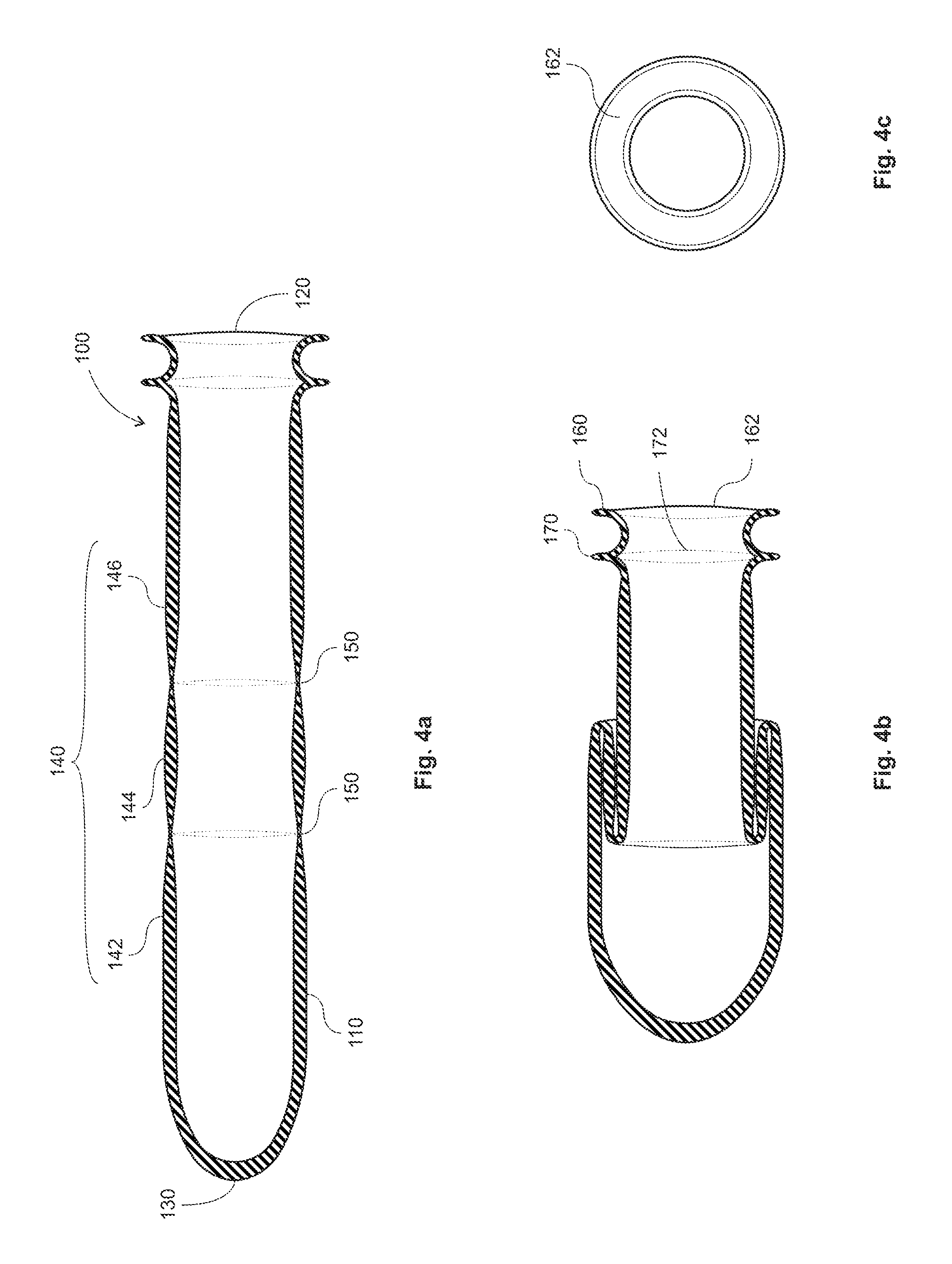Condom
a technology for condoms and receptive skin, applied in the field of condoms, can solve the problems of increasing the risk of condom being torn during use, increasing the risk of condom being torn, and reducing so as to reduce the overall length of the condom, facilitate insertion, and more structural rigidity
- Summary
- Abstract
- Description
- Claims
- Application Information
AI Technical Summary
Benefits of technology
Problems solved by technology
Method used
Image
Examples
Embodiment Construction
[0047]As shown in FIGS. 1, 2 and 3, the condom 1 of the present invention has a sheath body 10 with a proximal end 20 that is open and a distal end 30 that is closed. In a preferred embodiment, the open end 20 has a diameter of approximately 1.0 inch, although the opening can expand to at least three times that diameter due to the condom 1 being made of stretchable material, such as heavy gauge silicone rubber.
[0048]At the open end 20, the condom 1 has a first collar 40. In a preferred embodiment, the first collar 40 is defined by an annular flanged rim 42 that is turned towards the sheath body 10 as shown in FIG. 2, and preferably having a diameter of at least 2.5 inches.
[0049]Adjacent to first collar 40 is a second collar 50, somewhat smaller than first collar 40, the second collar 50 having a diameter of approximately 2.0 inches. The second collar 50 is similarly defined by an annular flanged rim 52 that is turned towards the first collar 40 as shown in FIG. 2, forming a neck por...
PUM
 Login to View More
Login to View More Abstract
Description
Claims
Application Information
 Login to View More
Login to View More - R&D
- Intellectual Property
- Life Sciences
- Materials
- Tech Scout
- Unparalleled Data Quality
- Higher Quality Content
- 60% Fewer Hallucinations
Browse by: Latest US Patents, China's latest patents, Technical Efficacy Thesaurus, Application Domain, Technology Topic, Popular Technical Reports.
© 2025 PatSnap. All rights reserved.Legal|Privacy policy|Modern Slavery Act Transparency Statement|Sitemap|About US| Contact US: help@patsnap.com



